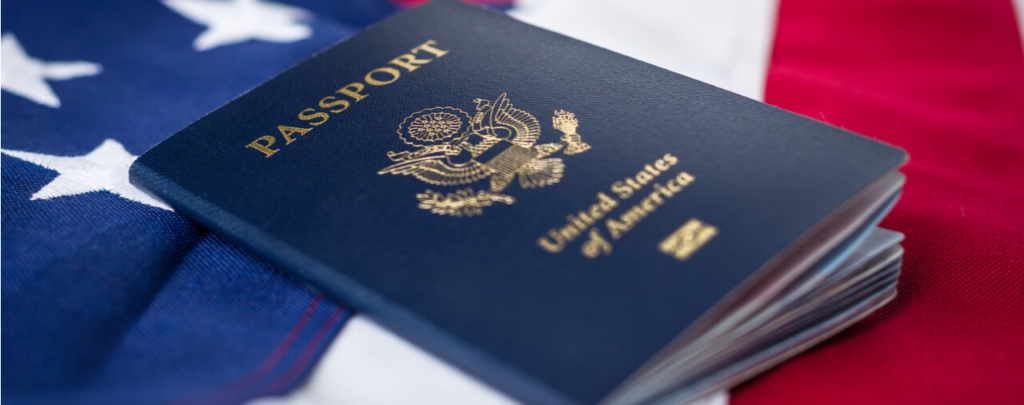- Introduction: Supreme Court to Review Second Circuit Decision in Morales-Santana v. Lynch
- Laws at Issue
- Second Circuit Decision in Morales-Santana
- Supreme Court Review
- Conclusion
(June 13, 2017 Update): On June 13, 2017, the Supreme Court of the United States decided Sessions v. Morales-Santana, 582 U.S. __ (2017) [PDF version]. The Supreme Court affirmed the Second Circuit in Lynch v. Morales-Santana in part and reversed in part. The Supreme Court agreed with the Second Circuit that the unequal treatment of unwed U.S. citizen mothers and fathers in the conferral of citizenship laws violated equal protection. However, the Supreme Court reversed the Second Circuit with regard to the remedy, ruling that the more stringent rules for fathers would apply to all cases. Please see our full article to learn about the Supreme Court decision [see article]. This article is presented as it was at the time of publication without further reference to the Supreme Court decision.
Introduction: Supreme Court to Review Second Circuit Decision in Morales-Santana v. Lynch
On July 8, 2015, the Second Circuit Court of Appeals issued a decision titled Morales-Santana v. Lynch, 804 F.3d 520 (Jul. 8, 2015) [PDF version], wherein it held that gender-based distinctions for deriving citizenship from one unmarried U.S. citizen parent under the pre-1986 immigration laws guiding derivation of citizenship unconstitutional.
On June 28, 2016, the Supreme Court granted the government’s petition for certiorari (review) of Lynch v. Morales-Santana, Docket No. 15-1191 [PDF version of questions presented]. In this article, we will examine the Second Circuit’s decision in Morales-Santana v. Lynch and the issues that the Supreme Court will review in Lynch v. Morales-Santana. Addendum (May 5, 2017): Please see our full article on the Supreme Court oral arguments in this case [see article].
To learn more, please see our full article on the derivation of citizenship at birth for a child born outside the United States [see article].
Laws at Issue
Under section 309(c) of the Immigration and Nationality Act (INA), if a child is born abroad to an unmarried U.S. citizen mother and an alien father, the child will derive citizenship at birth only so long as the mother was physically present in the United States or in an outlying possession for one continuous year prior to the child’s birth. The one-year continuous presence requirement has been law since December 24, 1952.
However, the laws are different when a child is born abroad to an unmarried alien mother and U.S. citizen father. First, it is important to note that the effective law for the derivation of citizenship at birth is the law at the time that the child turned 18 years of age. At issue in Morales-Santana is the old section 309(c) of the INA, 66 Stat. 163, 283-89 (codified at 8 U.S.C. 1409(c) (1952)). The provision applies to persons born abroad to an alien mother and a U.S. citizen father who turned 18 years of age between December 24, 1952,1 and November 13, 1986 (note that under 7 FAM 133.4-2, an alien who was between 15 and 18 years of age on November 13, 1986, may derive citizenship under the old rules or the current rules). The law stated that in order for a child to derive citizenship at birth through his or her U.S. citizen father (in the situation described above), the U.S. citizen father must have been continuously present in the United States for a period of ten years, with five of those years occurring after the age of fourteen. At issue in Morales-Santana is the difference between the continuous presence requirement for U.S. citizen fathers to confer citizenship and for U.S. citizen mothers to confer citizenship.
Please note that under current law (sections 301(g) and 309(a) of the INA), the continuous presence requirement for fathers has been reduced to five years total with two of those years occurring after the age of fourteen. It is likely that if the Supreme Court upholds the Second Circuit’s decision (see below for discussion), the current rules will be liable to be struck down as well as the old rules.
Please see our material on site learn more about the rules for derivation of citizenship for a child born abroad to unmarried parents [see section].
Second Circuit Decision in Morales-Santana
Facts
The petitioner’s father was born in Puerto Rico on March 19, 1900, and he acquired United States citizenship in 1917 under the Jones Act. He was physically present in Puerto Rico until February 27, 1919, 20 days before his 19th birthday (meaning that he was just short of having spent 5 years “in the United States” after his 14th birthday). The petitioner was born in the Dominican Republic in 1962 to his father and his alien mother. The petitioner “was what is statutorily described as ‘legitimat[ed] by his father upon his parents’ marriage in 1970.’” The petitioner was admitted to the United States as a lawful permanent resident (LPR) in 1975. The petitioner’s father died in 1976.
In 2000, the petitioner was placed in removal proceedings after having been convicted of various felonies. He applied for withholding of removal with an immigration judge on the basis of his claim that he had derived citizenship from his father. His application was denied. The petitioner filed a motion to reopen removal proceedings with the Board of Immigration Appeals (BIA) based on the claim that the stricter rules for deriving citizenship through a U.S. citizen father than a U.S. citizen mother (when the parents were unmarried) violates Equal Protection under the Fifth Amendment of the U.S. Constitution. The BIA rejected his claim of citizenship and denied his motion to reopen removal proceedings. The petitioner appealed to the Second Circuit.
Issues Presented and the Second Circuit Decision
The petitioner argued 2 that the treatment of the conferral of derivative citizenship violated his father’s guarantee of equal protection under Fifth Amendment of the U.S. Constitution.3 Both the petitioner and the government agreed that had the facts been the same except that his citizen parent was his mother, he would have been eligible under statute to derive citizenship.
The government argued that the gender-based distinctions in the nationality law were justified by two interests:
1. Ensuring a sufficient connection between a citizen and the United States.
2. Avoiding statelessness.
However, the Second Circuit rejected both of the government’s arguments and found that the gender-based distinctions indeed violated the petitioner’s father’s equal protection rights. First we will examine the Second Circuit’s decision and second we will discuss its remedy.
First, in evaluating the government’s claims, the Second Circuit applied what is called “intermediate scrutiny” (following Nguyen v. INS, 533 U.S. 53, 68, 121 S.Ct 2053, 150 L.Ed.2d 115 (2001) [PDF version]). Under this analysis, the Second Circuit sought to determine whether the government’s justification for the discriminatory statute was genuine, whether the means employed by the statute advanced the government’s objectives, and whether the statute did not rely upon “overbroad generalizations” about the differences between males and females (see U.S. v. Virginia, 518 U.S. 515, 533, 116 S.Ct. 2264, 135 L.Ed.2d 735 (1996) [PDF version]). The Second Circuit rejected the government’s argument that it should instead apply “rational basis scrutiny” instead (wherein the Court would determine only whether the law is rationally related to a legitimate government interest).
The Second Circuit agreed with the government that ensuring a sufficient connection between the child and the United States was a legitimate governmental interest. However, the Second Circuit held that (i) Congress did not have this interest in mind when writing the statute in question, and (ii) that the statute did not advance this interest. Notably, the Ninth Circuit reached a different conclusion on this very issue in U.S. v. Flores-Villar, 536 F.3d 990 (9th Cir. 2009) [PDF version]. The government relied upon the Supreme Court’s decision in Nguyen v. INS, wherein the Court upheld the constitutionality of the legitimization requirement that exists for a U.S. citizen father but not for a U.S. citizen mother (relating to the child born abroad of an unmarried U.S. citizen parent and alien parent). However, the Second Circuit noted that the majority in Nguyen upheld the legitimization requirement because the government had a legitimate interest in “assuring that a biological parent-child relationship exists” and in ensuring “that the child and the citizen parent have some demonstrated opportunity or potential to develop” a “real, meaningful relationship.” The Second Circuit distinguished the situation in Morales-Santana by noting that the petitioner had been legitimized and that the different rules for physical presence do not implicate the legitimate government interests that the Supreme Court found in Nguyen.
With regard to the government’s claim that the gender-based distinctions in the statute advanced its interest in preventing statelessness, the Second Circuit held that “the avoidance of statelessness does not appear to have been Congress’s actual purposes in establishing the physical presence requirements…” Furthermore, the Second Circuit held that in either case, the gender-based distinctions in the physical presence requirements were not substantially related to preventing statelessness. The Second Circuit also held that even if preventing statelessness had been Congress’s actual motivating reason for the gender-based distinctions, the provision would not have survived intermediate scrutiny because there were “effective gender-neutral alternatives.”
Remedy
Having found that the gender-based distinctions violated the petitioner’s father’s Fifth Amendment right to equal protection, the Second Circuit moved on to determine the remedy. The Second Circuit noted that it had three potential remedies available:
1. Strike down the old section 309(a) and (c) entirely;
2. Require every unwed citizen parent to meet the 10-year continuous presence requirement that existed for U.S. citizen fathers under the old sections 309(a) and 301(a)(7);
3. Require every unwed citizen parent to meet the 1-year continuous presence requirement that existed and exists for U.S. citizen mothers under section the old section 309(c).
The Second Circuit rejected the first option because section 406 of the INA states that if any particular provision of the INA is held to be invalid; the remainder of the INA “shall not be affected thereby.”
The government advocated that in the event that the Second Circuit found the gender-based distinctions to be unconstitutional, it should adopt the second option to require every unwed citizen parent covered by the old rules to meet the ten-year continuous presence requirement. However, the Second Circuit noted that prior to 1940; there was no continuous physical presence requirement for unwed U.S. citizen mothers at all. In light of this, the Second Circuit noted that severing the one-year continuous presence requirement for mothers rather than the ten-year continuous presence requirement for fathers would represented to the 1952 Congress “a more radical change than the alternative.” Additionally, the Second Circuit found that the Supreme Court generally extends rather than contracts benefits “in the face of ambiguous congressional intent.” The Second Circuit noted that it was “unaware of a single case in which the Supreme Court has contracted, rather than extended, benefits when curing an equal protection violation through severance.”
Power to Grant Citizenship
Finally, the government argued that if the Second Circuit granted the petitioner relief, it would be granting citizenship where it did not have the power to do so. The Second Circuit acknowledged that it lacked the authority to confer citizenship, but, it held that it had the authority to determine whether the statute conferred the petitioner with citizenship at birth when freed from its constitutional defect (citing to former Justice Sandra Day O’Connor’s dissenting opinion in Nguyen at 95-96). The Court, citing to the majority opinion in Miller v. Albright, 523 U.S. 420 (1998) [PDF version], explained that it would simply be confirming the petitioner’s pre-existing citizenship rather than granting him citizenship that he did not already possess.4 Furthermore, the Second Circuit held that it was required to settle the nationality claim under section 242(b)(5)(A) of the INA. Accordingly, the Second Circuit held that the petitioner had acquired U.S. citizenship at birth.
Supreme Court Review
The Supreme Court will address the following questions on review:
1. Whether the Congress’s decision to impose different physical-presence requirements on unwed citizen mothers of foreign-born children than on other parents of foreign born children through INA 301 and 309 (1958) violates the Fifth Amendment’s guarantee of equal protection.
2. Whether the Second Circuit erred in conferring U.S. citizenship on the respondent (the petitioner in the Second Circuit case is the respondent in the Supreme Court case).
Conclusion
In Miller v. Albright and Nguyen v. INS, the Supreme Court narrowly rejected equal protection challenges to the additional proof of paternity requirement for children born to an unwed U.S. citizen father (where the mother is an alien) and the legitimization requirement in such cases. In both cases, current Justices Ruth Bader Ginsburg and Stephen Breyer dissented. Current justices Anthony Kennedy and Clarence Thomas joined the majority opinions in both cases (Justice Kennedy joined a concurring opinion in Miller v. Albright while Justice Thomas joined concurring opinions in both cases (see below)).
Lynch v. Morales-Santana will be the first time that the Supreme Court considers the constitutionality of the continuous presence requirement. As we noted earlier, there is a circuit split on the issue because the Ninth Circuit found that there was no equal protection violation in U.S. v. Flores-Villar, 536 F.3d 990 (9th Cir. 2009).
Furthermore, even if the Supreme Court finds that the different continuous presence requirement does violate equal protection, it must determine whether the Second Circuit was within its authority to provide relief. On this particular issue, it is worth noting that Justice Clarence Thomas joined two concurring opinions by Justice Antonin Scalia in Miller and Nguyen, taking the position that the Court did not have the power to provide relief (citizenship) even if it had granted the equal protection challenge.
Furthermore, although Lynch v. Morales-Santana concerns the ten-year continuous presence requirement under the previous statutes, a Supreme Court decision finding (1) the gender-based distinction violates equal protection and (2) the Second Circuit correctly found that the respondent was a citizen from birth, would seem to necessarily implicate the current rules which reduced the continuous presence requirement for a U.S. citizen father from ten years to five.
We will update the site with further information as the litigation regarding Morales-Santana v. Lynch proceeds.
Addendum (May 5, 2017): Please see our full article on the Supreme Court oral arguments in this case [see article].
- But note that the 10/5 year physical presence requirement also applied to children born in this situation between January 13, 1941, and December 23, 1952 under a different statutory scheme.
- The petitioner also made three statutory arguments that his father had been eligible to confer citizenship. The Second Circuit rejected all three of these arguments and its decision to do so will not be reviewed by the Supreme Court.
- The Second Circuit found that the petitioner had standing to assert this equal protection claim on his deceased father’s behalf under Campbell v. Louisiana, 523 U.S. 392, 397, 118 S.Ct. 1419, 140 L.Ed.2d 551 (1998).
- But note that in Miller and Nguyen, former Justice Antonin Scalia and Justice Clarence Thomas took the position that an equal protection challenge to a different provision of the same statute must be dismissed because the Court had no power to confer citizenship on a basis other that prescribed by Congress.





